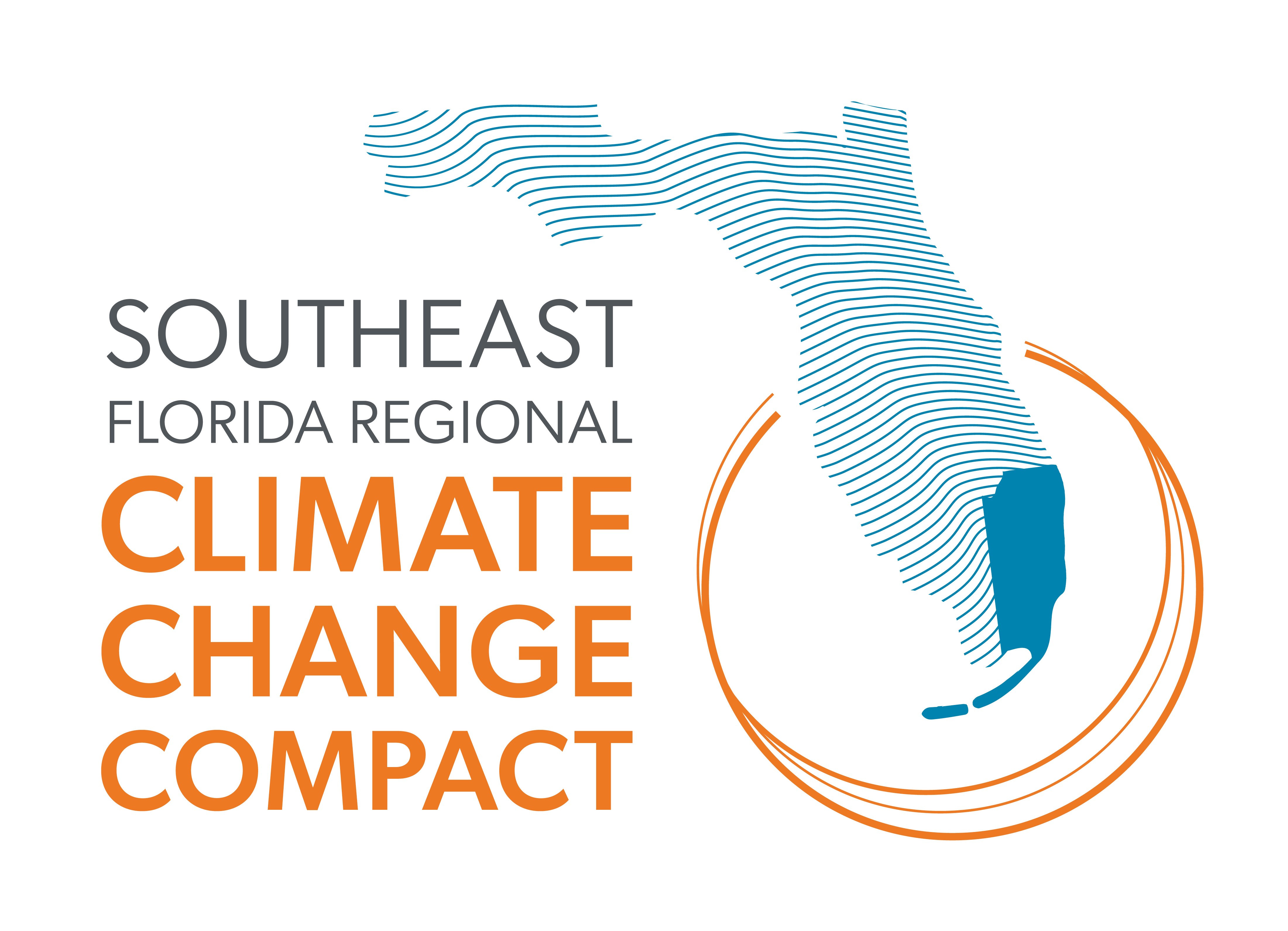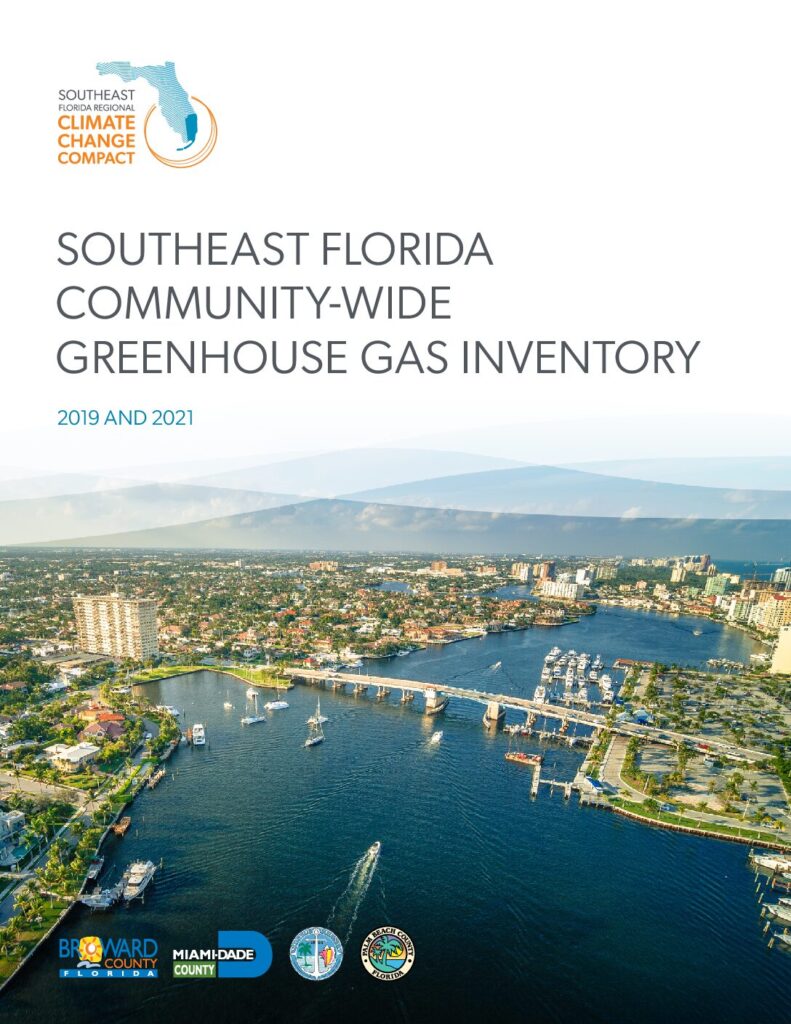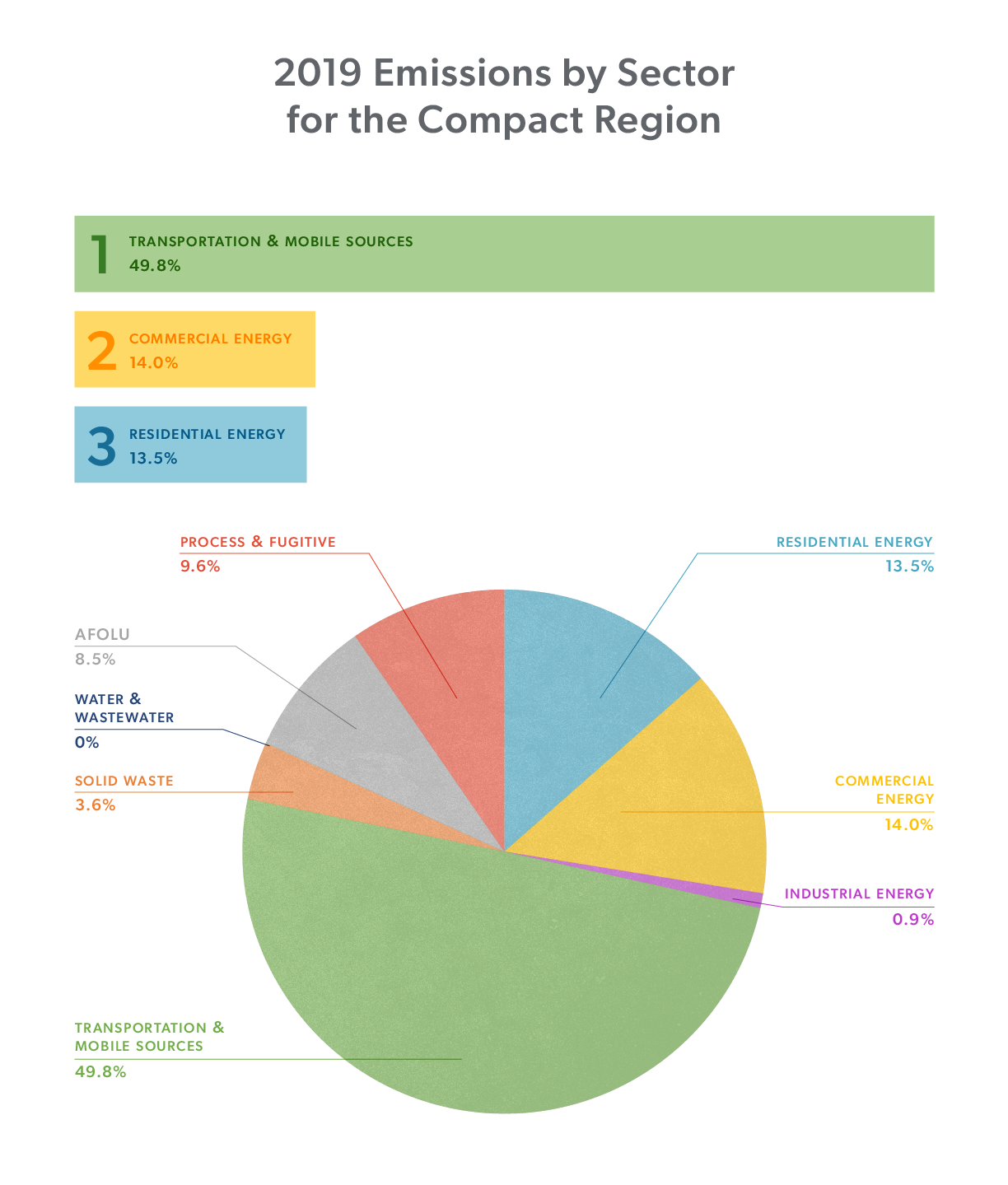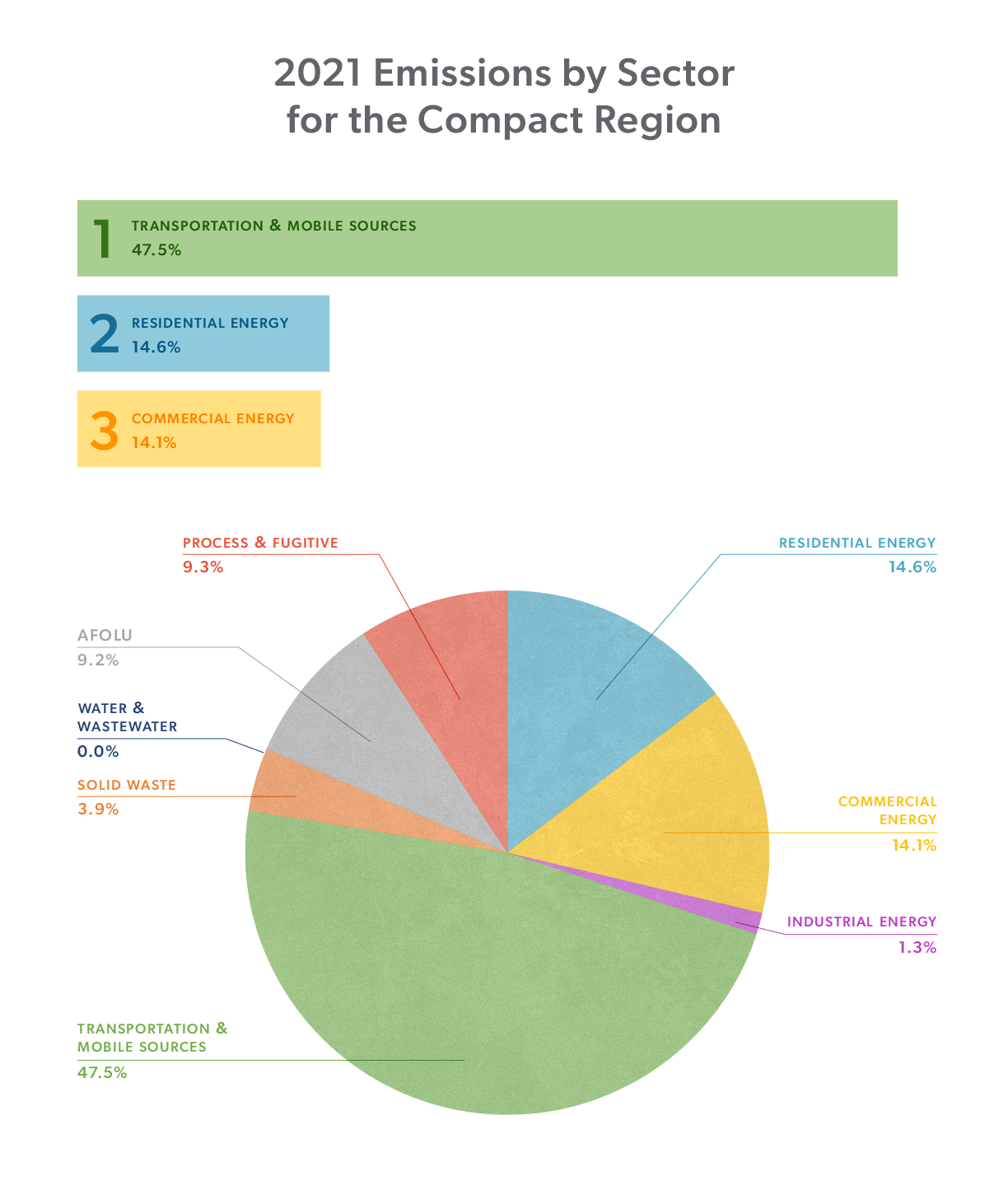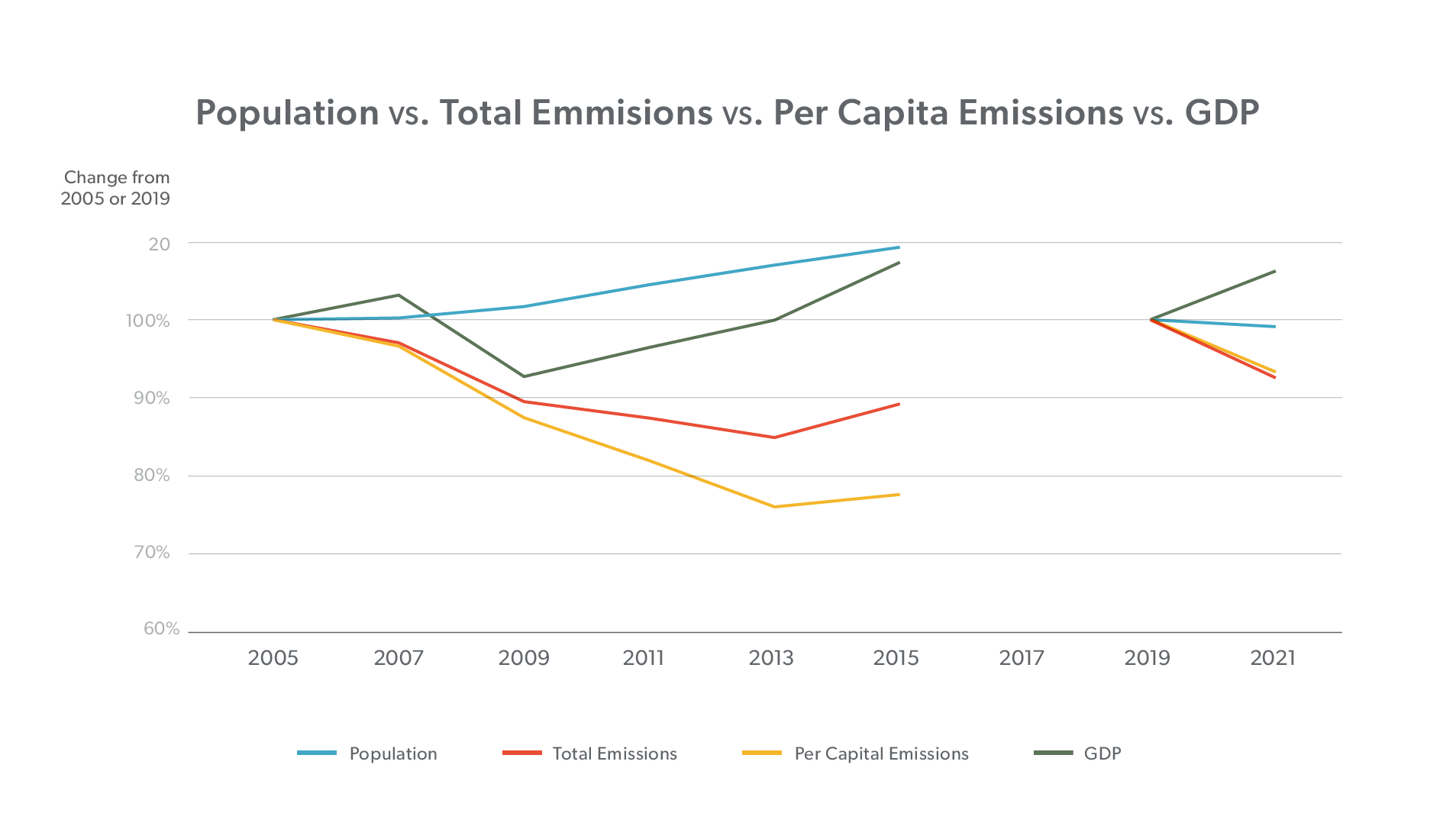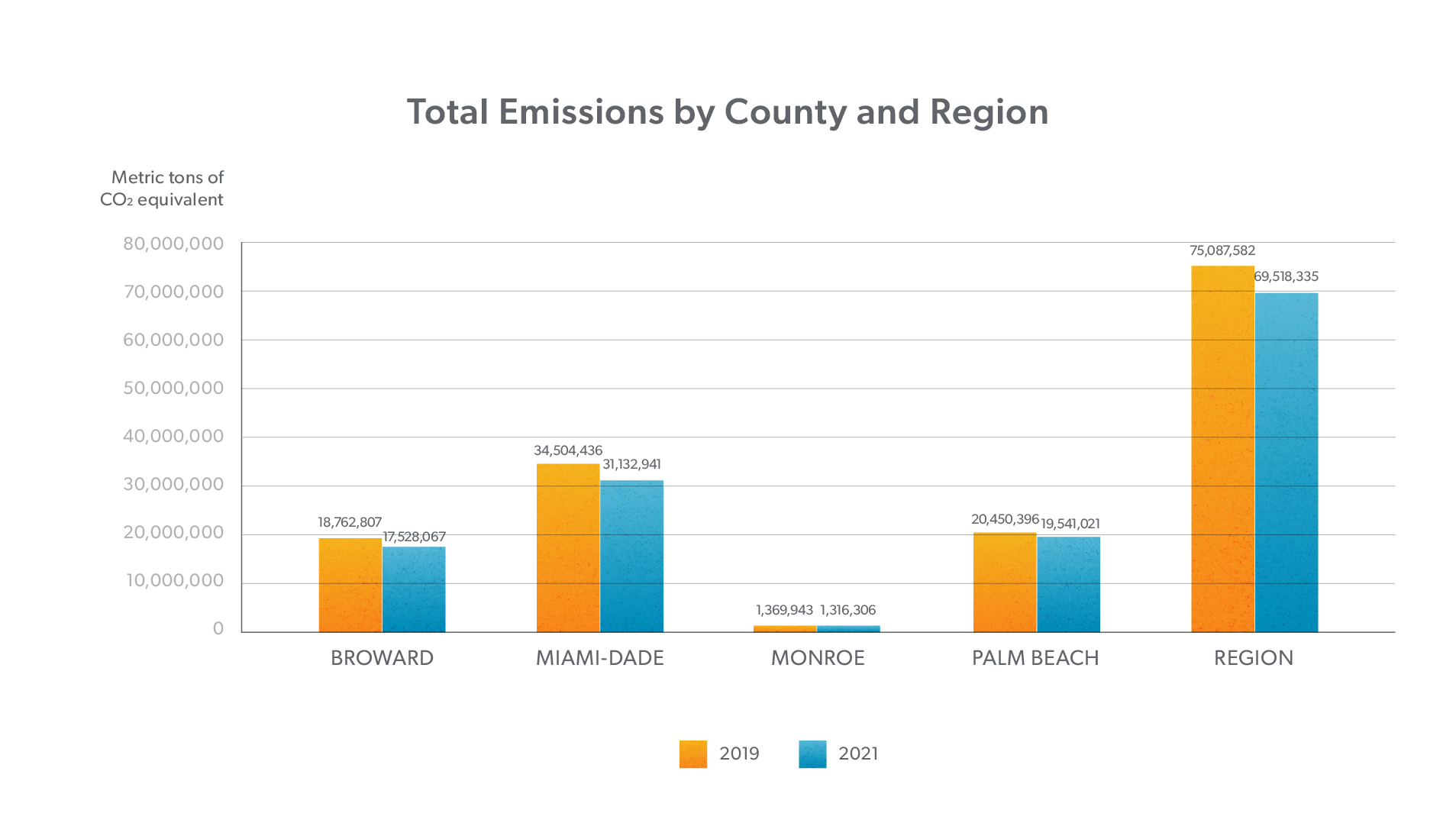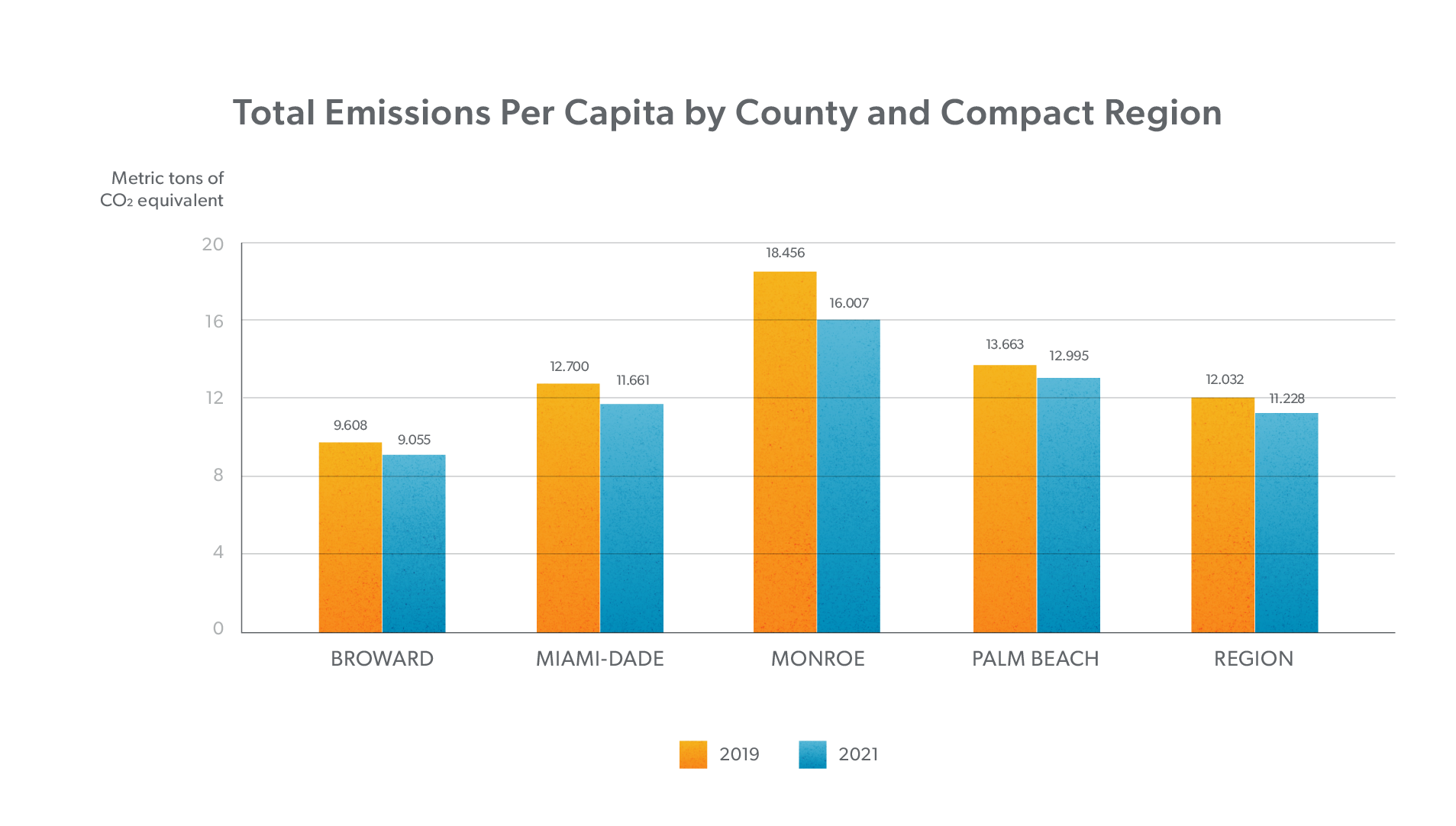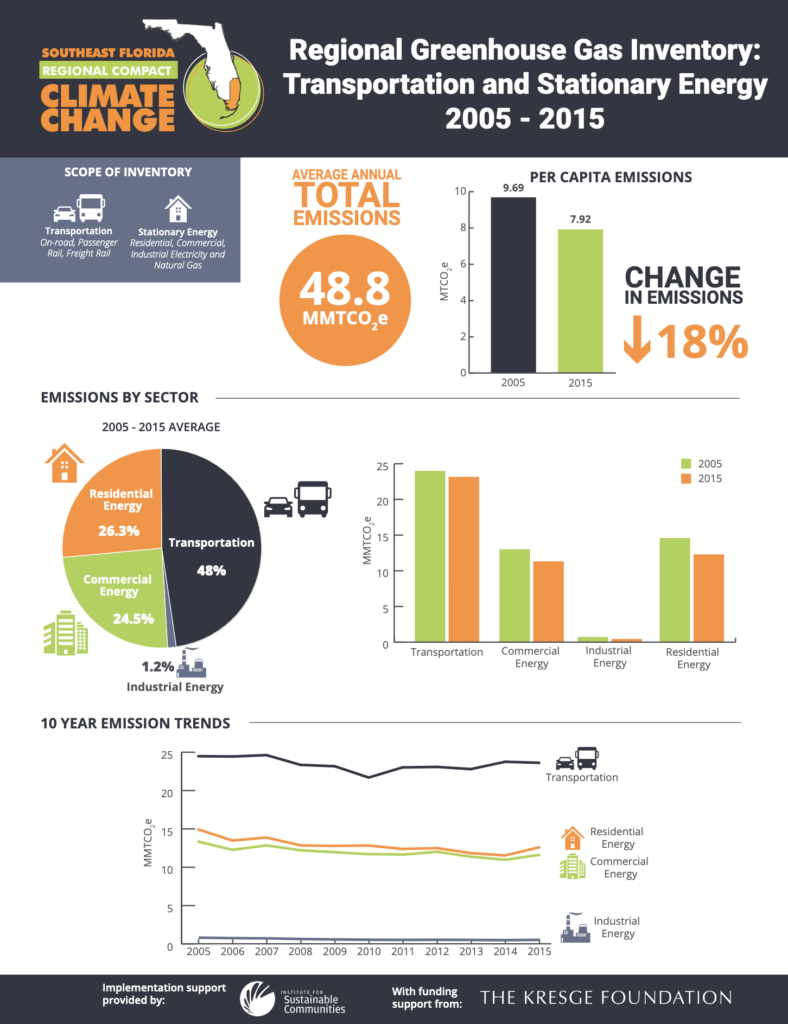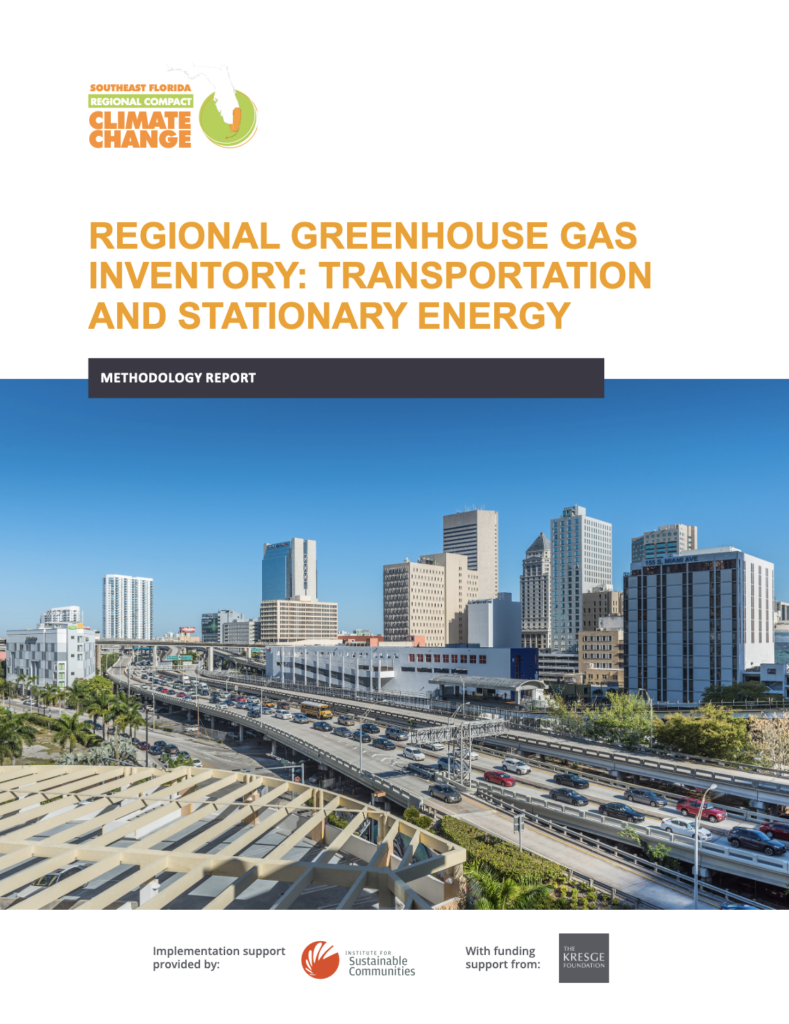
Southeast Florida Community-Wide Greenhouse Gas Inventory 2019 and 2021
Through the establishment of the Southeast Florida Regional Climate Change Compact, Broward, Miami Dade, Monroe, and Palm Beach counties committed to collaborate on strategies to reduce the region’s emissions, including the development of an emissions baseline for Southeast Florida. A regional greenhouse gas emissions (GHG) inventory is integral to developing informed climate change mitigation strategies and monitoring the region’s progress over time.
In 2024, the Compact worked in partnership with ICLEI USA to conduct a community-wide inventory of greenhouse gas emissions for the four-county Compact region. The regional greenhouse gas (GHG) inventory report provides a summary of emissions trends across Broward, Miami- Dade, Monroe and Palm Beach Counties for 2019 and 2021, inclusive of commercial, residential, and industrial stationary energy; transportation and mobile sources; solid waste; water and wastewater; and agriculture and land use. The regional inventory is an assessment of community-wide emissions of predominant major greenhouse gases: carbon dioxide (CO2), methane (CH4), and nitrous oxide (N2O); and also includes emissions of sulfur hexafluoride (SF6), hydrofluorocarbons, and perfluorocarbons.
Results of the Compact’s inventory can be found on the tabs below.
The Compact previously conducted an inventory of regional emissions from 2005 to 2015. However, the scope was limited to systems at the regional scale, including transportation (on-road transportation, passenger rail, and freight rail) and stationary energy from residential, commercial, and industrial buildings, making comparisons between the results of this inventory and the previous inventory difficult. The previous GHG inventory is archived at the bottom of this page for reference.
The Compact’s Regional Climate Action Plan 3.0 established a region-wide goal to reach net zero emissions by 2050, and the Compact is in the process of developing a regional GHG reduction plan through the Environmental Protection Agency’s Climate Pollution Reduction Grant, which will be completed in December 2025.
